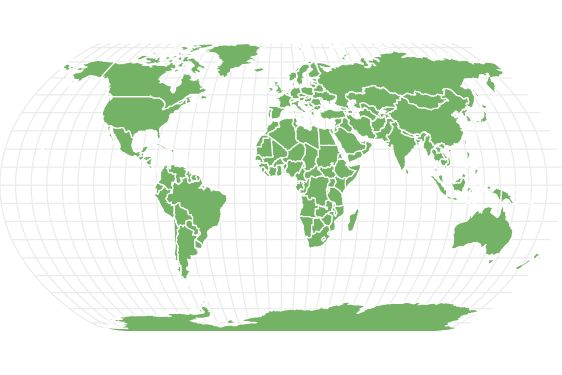Ape
Hominoidea
Love to learn, especially through observation
Advertisement
Ape Scientific Classification
Ape Facts
- Prey
- Varies
- Name Of Young
- Infant, baby
- Group Behavior
- Community-minded
- Fun Fact
- Love to learn, especially through observation
- Estimated Population Size
- Various
- Biggest Threat
- Humans
- Most Distinctive Feature
- Varies
- Other Name(s)
- Varies
- Gestation Period
- Eight months
- Litter Size
- One
- Habitat
- Mountains, rainforests, forests
- Predators
- Crocodiles, Eagles, big cats
- Diet
- Herbivore
- Number Of Species
- 26
- Location
- Africa and Asia
- Group
- Tribe
Summary
Apes are part of the superfamily of primates, the Hominoidea.
The Hominoidea encompasses a variety of species called “lesser apes” and “great apes.” These include the gorilla, orangutan, chimpanzee, bonobo, and humans(!). There are other primates whose common name may include “ape,” but those species are not primates.
Most primates are skilled climbers, especially when it comes to trees. They are omnivorous with a primary diet of vegetation. Foods include grass seeds, fruit, and the rare partaking of meat or invertebrates. Scavenged or hunted, they consume pretty much anything available that’s easily ingested.
Primates are native to Asia and Africa. Humans and species of great apes have startling similarities. Yet, at the same time, the gap in differences is huge when you compare the psychological, cultural, emotional, and spiritual aspects of each species.
Every species has its own language, symbols, communication techniques, and unique governance systems. But there’s no denying that human versions are far more complex. Technologies, scientific advancement, self-awareness, and even religion put humans in a category outside of standard primates.

5 Amazing Ape Facts
Apes and humans share blood types. That’s A, B, AB, and O. In that vein, chimps and gorillas can donate blood to humans. And vice versa. But as different species of animal, there are too many variants to consider before this could ever be a medical reality.
- In order to communicate, adult male orangutans inflate their throats and create a pouch. That allows the animals to make a deep noise that can be heard close to a mile away.
- Gorillas gather in big families. These are called harems.
- Mothers care for their baby orangutans until the infants are six or seven years old.
- Bonobos will grab a stick and use it as a weapon.
- Chimpanzees and humans share the same blood types. Theoretically, the two mammals could provide transfusions for each other.
Scientific Name
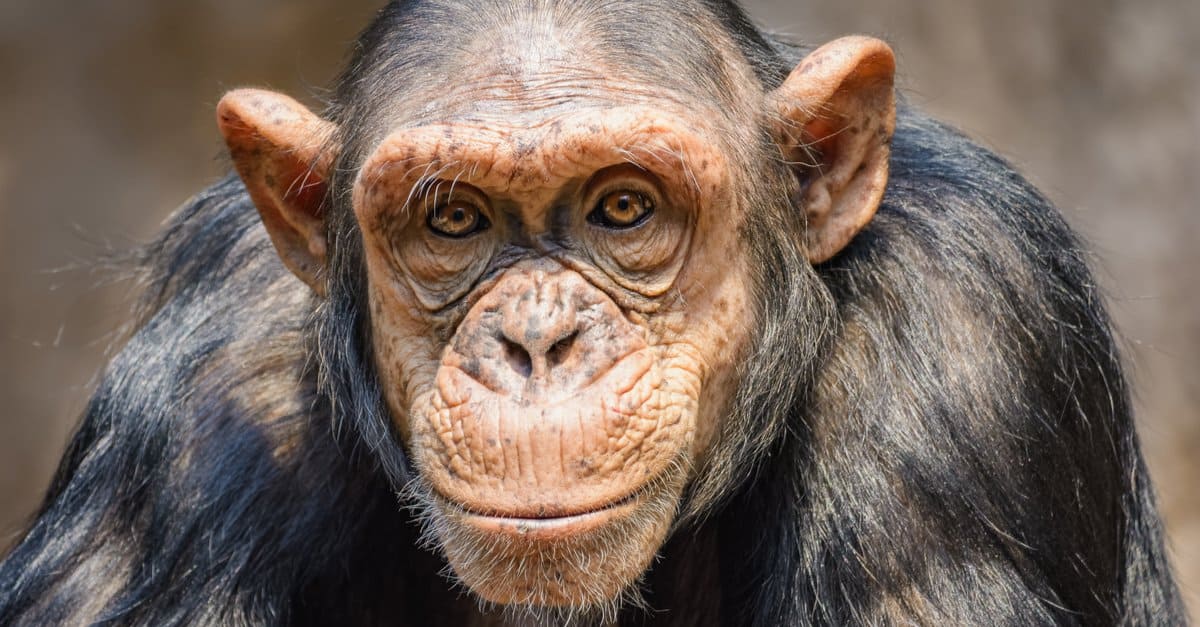
The Ape is a primate superfamily that consists of two subgroups.
©Thorsten Spoerlein/Shutterstock.com
The primate is a member of the Hominoidea superfamily. The grouping consists of tailless primates belonging to the Hominidae and Hylobatidae families. The Hylobatidae consists of gibbons. Hominidae entail bonobos, chimps, gorillas, orangutans and humans.
Once classified as Pongidae, great apes got reclassified after extensive study proved closer similarities to humans as opposed to being closely related to chimps and monkeys. Gorillas, chimps, and humans are the Homininae subfamily. Orangutans belong to the Ponginae subfamily. Other distinct groups are Gorillini (gorillas) and Panini (chimpanzees).
Evolution And History
While there is evidence of primate-like mammals having evolved as early as almost 65 million years ago, during the Paleocene era, there doesn’t appear to be enough evidence that illustrates them playing an integral part in the transformation of later primates. It was not until the Eocene era, 55 million to 33 million years ago, that the first true primates, prosimians, evolved.
By the end of the Oligocene era, monkeys began to evolve from these early prosimians, which is believed to have caused the earlier species to become extinct. Once the Micone era arrived, apes had then begun to evolve from monkeys, and one of the earliest examples of this was in an extinct species called Proconsul that was found in the forests of Africa around 21 million years ago. Through weather conditions and migratory patterns, the species would eventually lead to distinct evolutionary branches which included human ancestors.
Types Of Primates

Pongo abelii is made up of Bornean, Sumatran and Tapanulis orangutans.
The human primate is a member of a broader superfamily zoologically. It acknowledges advanced cognitive abilities (including the ability to speak; though all primates do have some form of communication), a striding two-legged gait, and larger brain sizes.
Great apes are recognizable by their large size but human-like bone structure. Gibbons are lesser apes by name — “lesser” meaning they’re smaller in size. Great apes are intelligent, far more than gibbons and even monkeys.
One identification that stands out is great apes recognize themselves in mirrors, something the vast majority of the animal kingdom can’t do. Like a lot of humans, most of these creatures have an instinctive phobia of drowning. So, you’ll find many primates putting a lot of energy into avoiding water.
There are 26 recognized types of apes. The list entails 16 lesser apes and eight great apes. Here are a few of the types and some of their interesting features.
- Pongo: Consists of orangutans. Of large size, pongo animals are infamous for having long orange colors. Living species are Bornean, Sumatran and Tapanulis orangutans.
- Gorilla: Gorillas are ground dwellers located in central Africa’s tropical forests. It’s believed humans share 98 percent of their DNA with the eastern and western gorillas.
- Pan: The Pan is the only subspecies here not listed as critical but they are still endangered. The group includes the chimpanzee and bonobo families.
- Homo sapiens: Another of the great apes is the human. We come from a long line of evolution. Homo erectus is the first species to walk upright. Humankind continues to create advanced civilizations and technologies.
- Hookok: These are gibbons, the second largest of the species. There’s the Eastern and Western Hoolock, and the Skywalker Hoolock.
Habitats
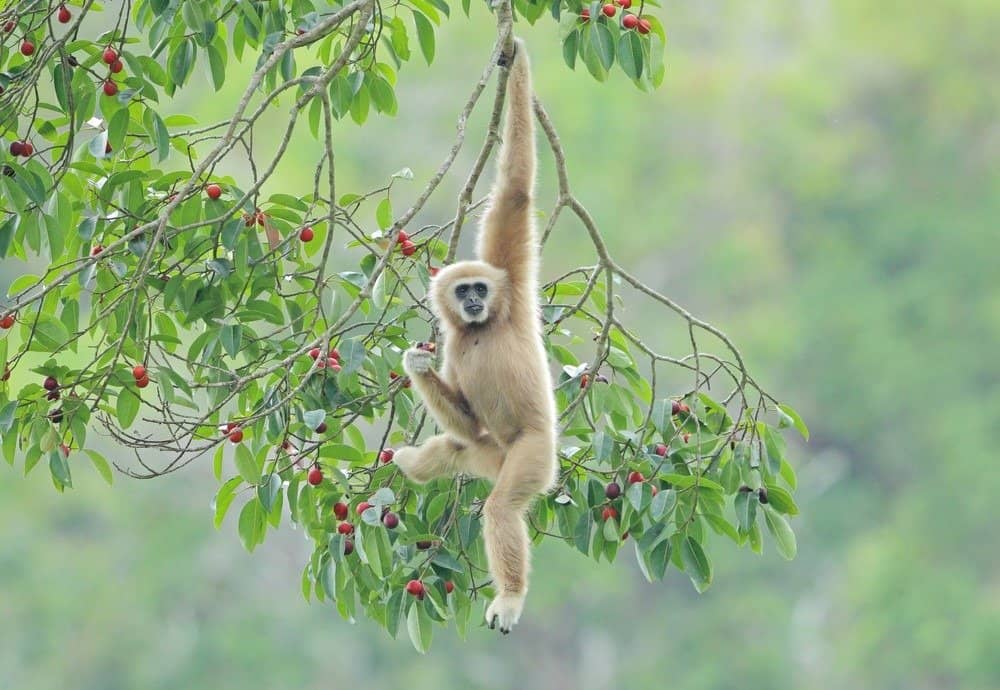
Common gibbon, one of the lesser apes, inhabits the forests of Asia.
©teekayu/Shutterstock.com
Apes live in close proximity, even as they break up into territories. Great apes are in Asia and Africa, finding habitat in the mountains, savannas, and jungles. Lesser apes are in Asia, inhabiting monsoon forests and tropical evergreen rainforests.
In groups and communities, these mammals are called a shrewdness or a tribe. The animals tend to be social, living like small families. Siamangs never wander more than 30 feet from one another. Gibbon communities are usually made up of two to six animals. Gorilla tribes can have 30 members. Chimps will have communities of up to 120. The communities play, eat, and protect one another.
For the most part, (if you leave out humans) these animals are herbivores. But many will snack on bugs or small animals. The gibbon diet is mostly fruit, flowers, insects, and leaves. Orangutans eat fruit, invertebrates, vegetation, and soil rich in minerals. Chimps go for fruits mainly but won’t turn away from birds, insects, and small mammals.
Ape Vs. Gorilla
Gorillas are anthropoids, considered a higher primate.
The thing we need to remember is a gorilla is a type of ape. So when we say “ape versus gorilla,” what we’re really saying is what distinguishes gorillas from all other members of the superfamily.
To begin, one of the more notable features is gorillas are the largest of the primates, stocky creatures with broad upper bodies. Features also include small eyes and human-ish hands. Many of these animals are “silverbacks.” That refers to an identification of white hair colors on the back, and a sagittal crest on the skull.
In many cases, there can be shorter hair on the lower portion of the body. The largest animal can stand up to almost six feet and weigh near 450 pounds.
Predators And Threats
The ape is larger in size, making it an adversary no one really wants. But even the smaller species have agility, strength, and speed on their side. So, none of these creatures are easy prey.
When it comes to predators, only the largest, most aggressive, powerful wild animals could potentially threaten these primates. That’s why animals like leopards, crocodiles, and lions are major enemies.
Of course, like most endangered species (and many species of primates are), the greatest threat to any animal remains mankind. Habitat loss via fragmentation, destruction, degradation, hunting, insecticides, and more are threats, and many of the conditions are the result of human encroachment.
What Eats Apes?
Here are some of the more likely predatory experiences for primates.
- Smaller types of monkeys and chimps have to keep an eye out for hunting cats like leopards.
- Young primates are easily in the line of fire when it comes to large cats and birds of prey, such as eagles.
- When it comes to predators, primate communities are quite protective of their young.
What Do Apes Eat?
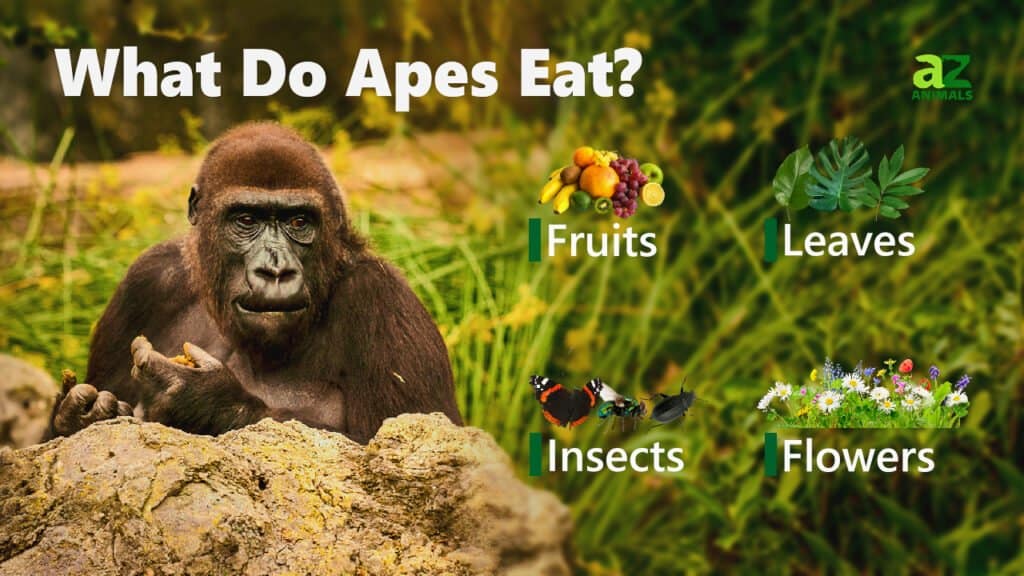
Fruit is the main item on any ape species menu. Of all the primates, humans manage the largest diet, eating all types of food, including vegetables, meats, fruits, dairy, cultivated, processed, etc.
Conservation Status
According to the IUCN Redlist, five species of the great ape are critically endangered. That includes the eastern and western gorillas, the Sumatran, and the Bornean orangutans. In the lesser ape category, the bonobo and chimpanzee fall in the endangered category.
Sadly, facts include the Tapanuli is down to less than 800 in the wild, making the animal the rarest of the ape family.
Reproduction, Babies, And Lifespan
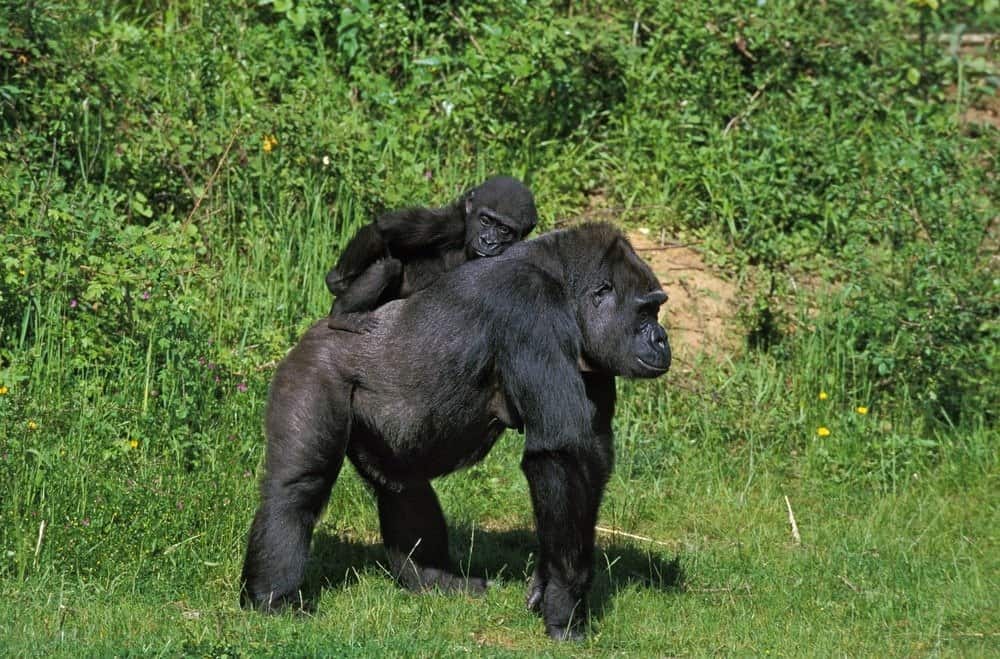
Eastern Gorillas typically give birth to one baby at a time.
©slowmotiongli/Shutterstock.com
Of course, we’re talking about a range of different animals here, all of which may have their unique processes. So, what follows are facts that pretty much cover the primary behavior of primates.
Apes have no mating season. They have sex whenever the mood strikes them. In the wild, it’s a go as long as the female is in heat. In some wild primate communities, the females are quite loosey-goosey, often mating with multiple partners in their communities as well as in others.
The female primate carries the baby in its bellies for a period of time. That gestation can vary. While gestation doesn’t appear far apart, on average female chimps carry for 243 days, Bornean orangutans 259 and bonobos have an average of 240.
Typically, primates give birth to one child at a time. We call that newborn an infant or baby. Twins are possible, though rare, mostly among gibbons, lemurs, monkeys, and baboons. Higher apes — chimps, gorillas, and orangutans — have never given birth to more than a single infant at any time.
Lifespan
Of the many similarities between humans and ages, one distinguishing and important identification is the respective lifespans.
Humans have a lifespan that, in general, is twice that of the ape. Regardless of the unique species, primates overall do not live more than five decades. The exception is the human. Human lifespans have doubled over the last two centuries, hitting 72.6 years in 2019.
Science attributes this to decreased infant mortality rates and advances in medicine, diet, and environment. And even if we take away those facts, studies still show communities in high-mortality ecosystems have a greater life expectancy than a newborn wild chimp.
These facts come from studies that attribute the gap to most apes foraging on vegetation while humans digest meat, a prime source of energy and protein which manages body size, increases brainpower, and reduces the size of our gut.
You can factor in all the alleged disadvantages associated with meat, but the facts are meat helps humans stay healthy and live longer, and our metabolisms have evolved to better adjust to meat-rich diets as long as we eat responsibly.
Population

The chimpanzee population is around 300,000 but is endangered due to the bush meat trade.
©Patrick Rolands/Shutterstock.com
Four nations — the Democratic Republic of the Congo, Madagascar, Indonesia, and Brazil — are home to 65 percent of all primates. (We assume that number refers to only wild apes outside of humankind.)
Populations are naturally gauged by a variety of facts. But when referring to the superfamily of primates generally, we can easily talk about large numbers, but it’s the numbers for the individual species that matter.
The western gorilla is still endangered even though its number is close to 250,000. There are almost 300,000 chimpanzees but less than 75,000 Bornean orangutans. And sadly, the Tapanuli is looking at less than 800 wild creatures worldwide.
View all 194 animals that start with AApe FAQs (Frequently Asked Questions)
What Is an Ape?
An ape is a member of the primate superfamily. What distinguishes them is, among other identification traits, all included species have no tail. Primates include humans, gorillas, chimpanzees, gibbons, orangutans and more.
Is an Ape a Monkey?
All types of monkeys are members of the primate tree. But when it comes to the primate superfamily, we can always adjust the following statement: all types of monkeys are apes but not all apes are monkeys.
Is an Ape a Gorilla?
Gorillas are primates and part of the Hominoidea superfamily.
Tribe
Like “all types of monkeys,” technically, not always. Humans are the planet’s most advanced primates. All apes are not human. The human has evolved much faster than other members of the superfamily. But, we come in all colors, cultures and sizes. Our brains work far more differently than other primates.
What are the differences between apes and monkeys?
The key differences between apes and monkeys are intelligence and tails. Other differences include location, joints, size, joints, and movements.
Thank you for reading! Have some feedback for us? Contact the AZ Animals editorial team.
Sources
- , Available here: https://www.britannica.com/story/whats-the-difference-between-monkeys-and-apes#:~:text=Monkeys%20and%20apes%20are%20both,of%20the%20human%20family%20tree.&text=Although%20you%20can't%20recognize,exhibit%20some%20use%20of%20tools
- , Available here: https://wwf.panda.org/discover/knowledge_hub/endangered_species/great_apes/gorillas/#:~:text=The%20largest%20living%20primates%2C%20gorillas,together%20and%20large%2C%20prominent%20nostrils
- , Available here: https://www.worldwildlife.org/species/gorilla#:~:text=The%20largest%20of%20the%20great,a%20lowland%20and%20upland%20subspecies
- , Available here: https://animals.mom.com/how-to-tell-the-difference-between-an-ape-and-gorilla-2277210.html
- , Available here: https://www.livescience.com/9769-humans-outlive-apes.html
- , Available here: https://www.livescience.com/51017-ape-facts.html#:~:text=The%20habitats%20of%20great%20apes,tropical%20rainforests%20and%20monsoon%20forests
- , Available here: https://outforia.com/types-of-apes/
- , Available here: https://www.dw.com/en/10-facts-you-probably-didnt-know-about-great-apes/a-19189577
- , Available here: https://easyscienceforkids.com/what-is-a-mammal/
- , Available here: https://www.livescience.com/51017-ape-facts.html
- , Available here: https://www.newworldencyclopedia.org/entry/ape
- Varies (1970) 50 years; longer for humans
- , Available here: https://centerforgreatapes.org/about-apes/
- , Available here: https://en.wikipedia.org/wiki/Ape

